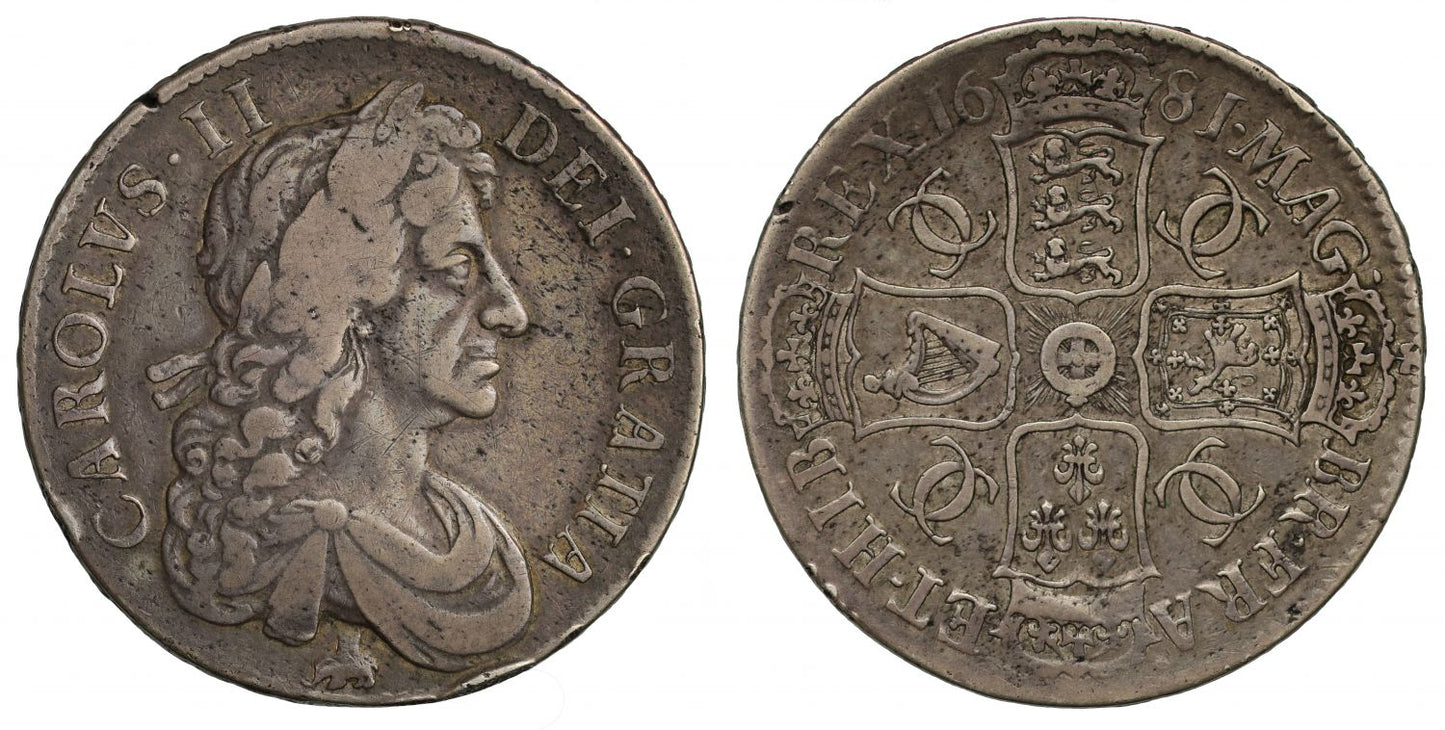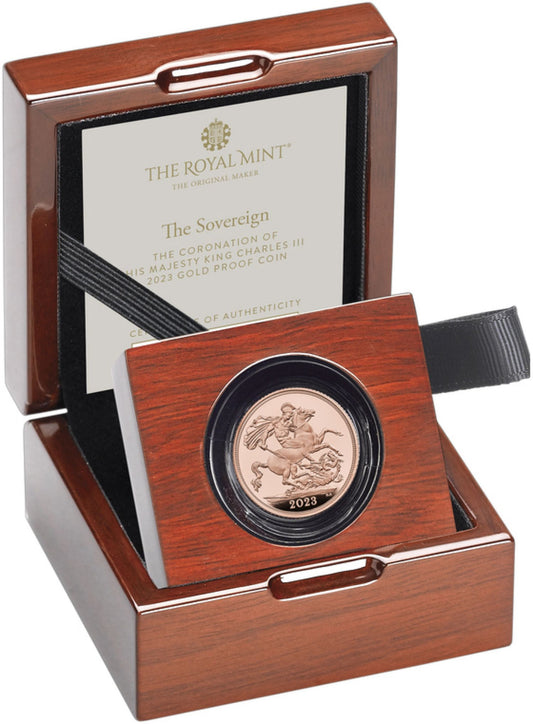FAQs
What makes a coin valuable?
I have coins to sell, what’s the next step?
How will my purchases be shipped?
What happens if I’m not entirely happy with my purchase?
Charles II 1681 Crown Elephant & Castle
Charles II (1660-85), silver Crown, 1681, elephant and castle below fourth laureate and draped bust right, Latin legend and toothed border surrounding, CAROLVS. II. DEI. GRATIA, rev. crowned cruciform emblematic shields, interlinked Cs in angles, garter star at centre, date either side of top crown, eight strings to Irish harp, Latin legend and toothed border surrounding, MAG. BR.FRA. ET.HIB REX. edge inscribed in raised letters, .+ DECVS. ET. TVTAMEN. ANNO... REGNI. TRICESIMO. TERTIO+.., weight 29.16g (Bull 415 R4; ESC 63 R4; S.3360). Toned with some speckling both sides, a couple of obverse rim bruises and rim nick, otherwise almost very fine with a bold facial portrait, very rare.
The Latin legends translate as on the obverse "Charles the Second, by the grace of God" and on the reverse, "King of Great Britain, France and Ireland" and additionally on the edge "An ornament and a safeguard, in the thirty third year of the reign."
The regnal year for Charles II always ignores the Commonwealth period and counts the regnal year from the death of his Father in January 1648/9.
The elephant and castle is the badge of the "Royal African Company" that had been recapitalised in 1672 having previously been the Royal Company of Adventurers, originally founded by the Duke of York in 1662. The issues of such provenance marked coins happened according to the boom or bust of the company and related to the import and export of metal or coin as at that time there was restrictions on British coin physically leaving our shores. By importing gold and other alloys the company was winning the right to be able to export just as much coinage as economic wealth it was bringing in, hence the issue of coin so marked. The 1681 issue of elephant and castle coinage was mainly accounted for by the gold Five Guineas, Guineas and Half-Guineas. The by-product of smelting the gold for coinage would have been silver alloy, which perhaps then allowed for the coinage of Crowns, Halfcrowns and Shillings which survive in much smaller numbers than the companion gold coins. The Shilling being of the highest rarity, the Halfcrown extremely rare, and the Crown very rare. It is known that the Royal African Company was generally importing gold from Guinea in Africa, but not particularly silver. Though research is ongoing into the activities of the Company it would seem to make sense that the coinage of 1681 was principally of gold with the silver alloy by-product perhaps exclusively supplying the much rarer minting of silver coin.
With the example offered for sale herewith, we are not aware of any better preserved examples, though there are at least two or three others of the same sort of grade with similar imperfections, the surviving population is no doubt very small.
FAQs
What makes a coin valuable?
I have coins to sell, what’s the next step?
How will my purchases be shipped?
What happens if I’m not entirely happy with my purchase?













